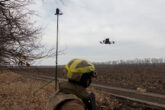December 02, 2016
Painting by Numbers: A History of the U.S. Military's Phasing Construct
Ask any budding student of security or member of the military where the focus of conflict is, and you’ll hear an emphatic “phase III operations.” The period in which decisive combat operations are undertaken is the meat and potatoes of America’s military. Glorified historical battles typically occurred in this phase, and most training and equipment is designed to operate in high-end conventional combat. Yet these high hopes have not proven decisive over the past 15 years. As Paul Scharre explored in the first two installments of this series, the phasing construct does not reflect reality. It was once valuable as a tool for force planning, but it has been applied too broadly and without sufficient utility.
Phasing’s Origins: The Unipolar Moment (1992-1993)
The origin of the phasing construct rests in the early post-Cold War era. Following decades of conflict against the Soviet Union and in the immediate aftermath of Operation Desert Storm, the U.S. Department of Defense went back to the drawing board to assess possible crises and evaluate force structure in light of the unipolar moment. The 1992 National Military Strategy contained many of the underlying concepts that later took form in the phasing construct, namely the idea of rapid decisive victory. The 1993 Bottom Up Review (BUR) matured this vision and presented the first iteration of the phasing construct for major regional conflicts that continues to inform operational planning today.
Read the full article at War on the Rocks.
More from CNAS
-
Defense / Transatlantic Security
When Defense Becomes Destruction: Austria-Hungary’s Mistake and Ukraine’s RiskThis article was originally posted on War on the Rocks. The southeastern Polish city of Przemyśl, with its elegant 19th century Habsburg-era train station, remains one of the ...
By Franz-Stefan Gady
-
Defense / Transatlantic Security
Ukraine’s Catch-22 MomentThis article was originally published in the Financial Times. In Joseph Heller’s wartime classic, Catch-22, the protagonist Yossarian seeks out the US army surgeon Doc Daneeka...
By Franz-Stefan Gady
-
CNAS Insights | Budgetary Own Goals Undermine “Speed and Volume”
On November 7, Secretary of Defense Pete Hegseth laid out a plan to overhaul the Department of Defense’s (DOD’s) acquisition system. Placing an emphasis on delivering new capa...
By Philip Sheers, Carlton Haelig & Stacie Pettyjohn
-
Drones: Who Is Making the New Weapons of War?
From Ukraine and Russia to Gaza and Sudan, drones have become a key weapon of war. Which companies are making them, and profiting from this rapidly expanding but controversial...
By Stacie Pettyjohn




